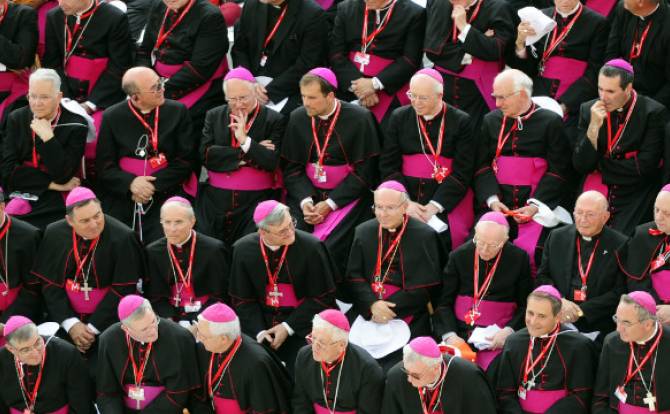2020 will go down as one of the most potted years in recent history. In the span of just a few months, which have seemed like decades each, we have experienced a global health pandemic, massive waves of unemployment in the US nearing the levels of the Great Depression, sustained public protests over racial injustice and police brutality, and continued environmental degradation. The shock of these concurrent crises has been such that when the US government revealed the authenticity of UFO evidence in April, it was met with collective public indifference. The timing may have been coincidental, but it was not enough to distract from the revelation that major multinational corporations jumped the queue to be first in line to siphon up the major share of pandemic relief funds authorized by Congress, while millions of US citizens waited (and many still are waiting) for an anemic one-time stimulus check — not enough to cover the average monthly rent.
These crises have continued unabated: the pandemic is now at its highest rates across the US, with many states completely reopened, hospitals at critical capacity, and major events like national holidays and school reopenings occuring in fairly quick succession. Nearly 1.5 million new unemployment claims are filed weekly while CARES Act benefits and renter protections expire at the end of the July. If Congress does not act, over 40 million unemployed Americans will see a 50-75% reduction of the meagre benefits they currently receive, while also finding late fees and evictions reactivated simultaneously. And, despite significant reduction in air and land travel in April and May, climate change is on an acceleration track that is pushing us dangerously close to the point of no return. The Arctic, for instance, is in the midst of record-setting temperatures that have not occurred in that area for millions of years, while temperatures and glacial melt rates are now hitting points that previous predictive models did not forecast to occur until 2090.
A lone bright spot is the burgeoning protest movement for racial justice occupying the streets and public spaces across the country. Through the organizational work of advocacy groups like Black Lives Matter, as well as newer, younger organizers, protests have spread rapidly and organically throughout the US (and beyond, sparking international action). The protest movement demonstrates not only that public collective action is possible, but also that it is essential and efficient.
In the span of a month of continual protests, we have witnessed the swift removal of toxic symbols of white supremacy and intimidation, such as confederate monuments, as well as concrete action in many municipalities and states to address critical issues of policing, community investment, and discriminatory institutional policies. Some cities and states have taken seriously the abolitionist call to restructure law enforcement and reallocate major budgetary outlays, divest from militarized police forces and dramatically increase public services and community investment. As well, on the headwinds of the protests, a number of Black progressive candidates won strong Democratic primary victories against centrist, white, neoliberal candidates, shocking the ossified party leadership and retiring several DNC ‘crime-bill’ era relics. These candidates ran on leftist platforms that recognized the interlocking nature of racial, social, economic, and environmental justice.
Unveiling the Legacy of Racial Injustice
The protests and primary victories provide an important opening for the left to create a broad, wide-ranging platform and an energetic, multi-racial coalition. These events bring to the foreground, more forcefully than ever before, how racial injustice has deep roots extensively embedded in the governing institutions and economic systems that dominate American life.
Take policing as one example. Critics and abolitionists do not focus just on tactics and training, though these are the most visible policy targets. Rather, they focus on how cities, states, and the federal government spend money and allocate resources: e.g., massive outlays for police departments and equipment coupled with austerity measures for housing, health, education, and vital services. Communities are disenfranchised and depleted while being surveilled and harassed. As Michelle Alexander and Angela Davis have powerfully demonstrated, these policies are directly linked to the notorious 1994 Crime Bill and the creation of the vast mass incarceration complex, which generated entire sets of new criminal laws and penalties that required a beefed-up enforcement apparatus, while cementing a relationship between public police and court systems and private, for-profit prisons).
Policing is also thoroughly entangled with US foreign policy in at least two ways. On the one hand, a high percentage of current US police officers are military veterans who served in Afghanistan and Iraq, two wars hallmarked by the surveillance and brutalization of non-white bodies. Many of the tactics employed by US police are importations of tactics learned in conflicts overseas. On the other hand, during the Bush administration and increasingly under the Obama administration, US police departments across the country became militarized units through a program in which the federal government orchestrated massive fire sales of surplus military equipment to police. Because of these sales, it is not unusual for small, rural police departments to have mine-resistant vehicles, tanks, and military-grade hardware on hand — larger cities are even more heavily supplied. In this way, the war has come home and our ‘public safety’ departments are equipped to do battle with those they are sworn to serve and protect.
Policing, of course, is just the tip of the iceberg. Keeanga-Yamahtta Taylor’s most recent publication, Race for Profit: How Banks and the Real Estate Industry Undermined Black Home Ownership, traces the terrible legacy of discriminatory housing policy, underscoring the collusive relationship between the federal government, banks, and the real estate industry to deny and defraud Black communities. This involves much more than just the notorious ‘sunset’ towns and suburban flights of old, but the patently racist and discriminatory policies inscribed into the banking deregulations, bankruptcy reforms, and ‘welfare’ overhauls of the 1990s and 2000s.
The constellation of legislation in the 1990s and early 2000s resulted in significant reductions in public housing funding and availability, as well as a simultaneous loosening of standards around lending practices (e.g., subprime mortgages) and a tightening of bankruptcy protections, all of which was designed to enable large banks to profit excessively off of financial precarity, particularly of non-white clients. The banking codes championed by the ‘Senator from MBNA’ also allowed the major banks to run licensed title pawn and payday loan shops, which, on account of the elimination of usury laws, could charge exorbitant and high frequency compounding interest rates.
The result of the latter policies was the explosion of piracy-banking businesses in communities of color and the near disappearance of traditional banking in these same communities. Because of this, even before the financial crisis of 2008, non-white communities were marginalized by the economic system that was enjoying a (temporary) boom. The financial crisis of 2008, predictably, had an outsize impact on non-white citizens: nearly 80% of Black wealth was destroyed in the meltdown; as well, the economic ‘recovery’ of the Obama years did not restore any of this, as Black wealth continued to decline during this period on account of the government’s decision ‘to foam the runway’ for financial institutions while refusing to intervene on behalf of citizens.
If this was not outrageous enough, government and industry policies around environment and health are even more disgraceful. Dorceta Taylor’s work, Toxic Communities: Environmental Racism, Industrial Pollution, and Residential Mobility, documents the horrifying history of how the US government has allowed — often legally — corporations and industries to dump toxic waste and hazardous materials in and around poor, non-white communities, which has resulted in exceptionally high rates of cancer, leukemia, asthma, neurological disorders, and diseases and defects in children. In the South, especially, this has coincided with further interlocking sets of policies around housing, healthcare, and social services.
On multiple occasions, southern states have knowingly approved public and low-income housing construction on or near former and active waste disposal sites. As health outcomes have spiraled, these same states have enacted draconian budget cuts to public health services, blocked Medicaid expansion, and closed public hospitals and clinics. These policies, of course, are the outcome of substantial political money doled out by the very corporations that are responsible for the pollution: Jane Mayer’s Dark Money provides an incredibly lengthy and illuminating account of how this network of money, policy, and pollution works.
But, this is not isolated to the South. Examples abound, from the water crises in Flint and Detroit to industrial pollution in Chicago, Minneapolis, Philadelphia, and St. Louis. It is an overt environmental racism knowingly enabled by state and federal governmental agencies, which is compounded by equally racist and punitive policies that deny healthcare relief. Communities of color are being deliberately poisoned by corporate capitalism and subsequently bankrupted by an out of control private healthcare system, or simply left to die by deliberate policy that denies access to even inadequate coverage and services.
Indigenous peoples fare even worse under this system. The US government repeatedly violates treaties with sovereign Native tribes, re-expropriating land and resources. The few meagre benefits established as recompense for centuries of genocide, atrocity, and theft are routinely underfunded or clawed back. The Indian Health Service program, for instance, is continuously understaffed, underfunded, and woefully inadequate to address the needs of the communities. One of the most recent outrages is that despite Native communities suffering from disproportionately high rates of Covid, and several tribal areas being hotspots, the federal government failed to disburse pandemic relief funds specifically designated for Native nations.
This comes on the heels of several years of fighting the US government and the fossil fuel industry to prohibit building oil pipelines across land and waterways sacred to Native tribes. In that fight, Native leaders and activists have been subjected to surveillance, harassment, unwarranted arrest and detainment, and assault by state and federal law enforcement and private security forces. At least two states, during the Standing Rock standoffs, went as far as to criminalize protest and introduced legislation making it legally defensible for motorists to hit protestors with their vehicles. The capitalist security state, in these instances, is willing to criminalize activities guaranteed by the Constitution in order to suppress dissent over governmental-corporate collusion to steal and pollute land that belongs by internationally recognized treaties to sovereign people and not the US.
It is fundamentally clear that, even in the immediate term, small, incrementalist measures are entirely out of synch with the moment. A building on the brink of collapse is not made habitable with merely a fresh coat of paint and a new set of shutters. As the pandemic rampages unchecked through the US and clusters of policy expirations come due mid-summer, things are on a course to combust in a way that appears to guarantee the near or even total decimation of our healthcare, economic, and educational systems. The issues outlined above are not tangential to this, but central: Covid-19 disproportionately affects BIPOC; healthcare, even with the Affordable Care Act, is increasingly out of reach and financially distressing for non-white patients; unemployment rates and housing scarcity are exponentially higher in communities of color (who will suffer greater tolls when unemployment supplements and renter protections expire); educational indebtedness is steeper for non-white students; public service cuts and austerity measures are racially encoded; environmental crises evince similar racial inequities.
The US system is already on fire—and has been for a long time—and the concurrent crises of the pandemic, the economy, and the environment are about to dump gasoline onto a raging, systemic fire. In one of the many cruel ironies of 2020, we are also on the path to assign to the architects who’ve spent their entire careers constructing these edifices the task of dismantling those same structures.
Reviving FDR’s New Deal?
That there is a sea change in our social and political conditions can be seen in how ‘Rooseveltian’ is becoming the watchword of the day, uttered by both Democratic nominee Joe Biden and even Boris Johnson in the UK. (It is somewhat ironic given that the Democratic Party has spent the past forty years attempting to unwind the legacy of FDR, as Thomas Frank powerfully demonstrates in his Listen, Liberal). However, there are two overriding reasons to be skeptical of this sudden race to reclaim the mantle of Roosevelt and the New Deal. The first is that this same expectation was raised and then dashed just over a decade ago. In the wreckage of the 2008 financial crisis, the public and the media cast newly elected President Obama as the return of FDR.
This legacy was not exactly eschewed by President Obama, particularly during his election campaign. But, as Frank underscores, the writing on the wall was already there during his transition to office: the administration Obama assembled was not Rooseveltian, but instead a continuation of the anti-FDR, anti-New Deal — in a word, neoliberal — Clinton machine. His selections set the course of the next eight years, which ushered in not a new New Deal, but more grand bargains, austerity, deregulation, tax cuts, and privatization. It is not mere coincidence that the crown jewel of the New Deal — Social Security — has come closest to being privatized or partially dismantled under Democratic administrations (Clinton’s and Obama’s) intent on burying Roosevelt and the specter of ‘big government’, scuppered only by the blind intransigence of the GOP (who are no less zealous for the demise of the New Deal, but who are even more lustful in denying Democrats the achievement).
The second reason is more substantial: the New Deal, as monumental a political feat as it was, is insufficient to meet the demands of the moment we are in. Although the New Deal saved the US system from the ravages of the Great Depression, it was conservative by design. Roosevelt’s intention with the New Deal was to ameliorate enough of the pain of the Great Depression to stave off the more radical demands by socialists, unions, organizers, and activists (even if he and others in the administration sympathized with these elements). At several points in the 1930s, it appeared possible that socialists and radical labor movements not only represented the mood of the majority of the American public but could also ride that wave into power. The New Deal corralled significant pockets of those movements into the formal structure of the Democratic Party, but also dissipated more robust external collective pressure.
But, the more ignominious aspect of the history of the New Deal is that many of its programs excluded non-whites, a political concession thought necessary to gain the support of segregationist southern Democrats (the types of deals that Joe Biden would later re-enact in partnering with overtly racist Senators like James Eastland and Jesse Helms to pass anti-busing legislation). The New Deal, for all its profound achievements, cannot be seen in isolation from who it left out and why. It would take three more decades of battles and enormous public pressure to bring non-white citizens somewhat more fully into the folds of the Great Society. And it is at just that point in history that the next several decades would witness Republicans and Democrats compete to see who could more quickly and completely dismantle the New Deal itself.
A Radical New Deal
What is needed now is something far more radical and much more visionary than the New Deal. It is not the time for Roosevelt, but for Bayard Rustin, Fannie Lou Hamer, James Baldwin, CLR James, Stuart Hall, Angela Davis, and Cornel West. The old New Deal, with few exceptions, has unwound; a Black and Red New Deal, forged by the vision and guidance of Black and Indigenous socialists and activists, must rise. The system, by necessity, must be rethought from the ground up and from the margins in, through which the lives and experiences of those dispossessed and discarded by the current system are foregrounded. What the moment demands is a raft of political policies and practices that recognize not only the dire condition of the system but also the scope of necessary action.
At a minimum, this looks like universal public healthcare, universal public education, universal basic income, free public transportation, community housing, community banking, worker-owned industries, businesses, and utilities, public directed community funding and services, and community-directed security. To accomplish this, our nation must squarely face the horrendous histories of white supremacy, racism, slavery, genocide, and displacement that are features, not bugs, of American capitalism. These brutal experiments have decimated generations of Black and Native people, and continue to bear poisonous fruit through transgenerational trauma. A Radical New Deal would encompass reparations to Black and Native communities, including land redistribution.
Given the extensive damage to the property, wealth, and health of many Black and Native communities by corporate industry and governmental malfeasance, reparations would necessarily involve truth commissions and redistribution of profits from offending entities. As well, while the Green New Deal is a start in the new direction to partially addressing the climate catastrophe, like its predecessor, it only goes far enough to hedge off more radical — and sufficient — measures. Instead, to meet adequately the threat climate change truly poses and in keeping with the theme outlined here, a Radical New Deal would empower Native tribes to establish, direct, and enforce environmental policy tout court.
These proposals are not as radical as they may sound. Rather, they represent a modicum of justice in response to the decades-long project of neoliberal capitalism, a project that has severely stunted our political imagination. If these proposals were to become policy, they would also eliminate the most extreme inequalities and shocks that are inherent to our unstable and vicious system. Even these do not go far enough, as they do not address the disastrous trade and foreign policies pursued by the US. But, they provide a foundation and a constructive framework through which even those might be addressed.
This moment places us at a national crossroads. 2020 could be the year the US decisively turns a corner and chooses a different path for itself, or it may be the point at which the nation decides to stay the course on the road to further crises. Simply going to the ballot box in November will not revolutionize our politics. The outcome will not be determined by an election, by memes, or social media. Regardless of the result of the general election in November, a future in the direction of justice and democracy will require a continual presence in the streets and a dramatic expansion of the organizing and consolidating of the masses demanding that their will be done.
Michael Gibson is editor of film, literature and arts for The Bias Magazine. He is a senior acquisitions editor at Lexington Books, author of a forthcoming academic monograph on Stanley Kubrick from Rutgers University Press and a PhD candidate at Vanderbilt University.




